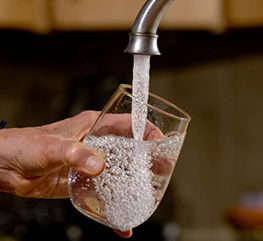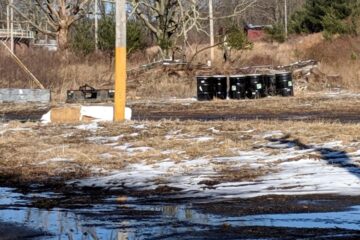 For families who get their drinking water from public utilities, the annual test results that come in the mail are likely reassuring. Most water utilities get a passing grade from regulatory agencies, meaning their drinking water meets state and federal standards for contaminants.
For families who get their drinking water from public utilities, the annual test results that come in the mail are likely reassuring. Most water utilities get a passing grade from regulatory agencies, meaning their drinking water meets state and federal standards for contaminants.
But a scathing new report by the nonprofit Environmental Working Group (EWG) contends that government water standards are outdated and do not adequately address the health threats posed by a myriad of contaminants.
“Here’s the dirty secret about government drinking water standards: Legal doesn’t necessarily mean safe,” wrote the EWG in its State of American Drinking Water report, released on Oct. 23.
According to the EWG, the problem is that the U.S. Environmental Protection Agency hasn’t added a single new contaminant to the toxic chemicals list covered by the Safe Drinking Water Act in almost 20 years. This ignores two decades of medical research documenting health threats posed by a wide array of chemical contaminants, including emerging contaminants whose impacts we’re just beginning to understand.
One example is Chromium-6 (hexavalent chromium), a cancer-causing chemical found in many public water supplies – including those of NJ American Water, which serves a number of local towns.
Chromium-6 is known as the “Erin Brockovich chemical” after the environmental crusader who battled a power company responsible for dumping the chemical into groundwater in California. The case gained national fame from the 2000 movie “Erin Brockovich,” starring Julia Roberts.
There is currently no federal standard for how much Chromium-6 in drinking water is safe. The Environmental Working Group believes the federal government should adopt California’s strict standard of a maximum of 0.02 parts per billion (ppb).
As the Somerset-Hunterdon-Morris county region’s watershed watchdog, Raritan Headwaters Association shares EWG’s concern over chromium in drinking water – both in public water supplies and in privately-owned wells.
NJ American Water’s annual testing data shows .397 ppb of chromium, or more than 20 times EWG’s recommended health guideline. The hexavalent chromium in that water is likely a byproduct of disinfecting public drinking water with chlorine.
There’s no doubt that chlorine treatments are needed. The risk of death from pathogens if public water supplies aren’t disinfected outweighs the risks associated with exposure to hexavalent chromium at the levels found here. Chlorine itself can have negative health effects and it’s possible that public water systems are over-chlorinating. But that’s an issue that would need further research.
Local residents aren’t wrong to be concerned about exposure to chromium in public water. Those who want to be on the safe side should consider installing a water filter to remove chromium and other chemicals.
Private well owners also need to be vigilant, because there is no government-required annual testing of well water. Testing of private wells is required by law only when a house is being sold. The only way homeowners with wells can know what’s in their water is by having it tested.
For over 30 years, Raritan Headwaters has contracted with a private lab to offer well water testing at a discounted cost. In 2016, we expanded our testing program to include chromium after an EWG study found high levels of Chromium-6 in the public drinking water supplies of at least 138 New Jersey communities.
Well testing is simple: just pick up a test kit at one of RHA’s offices and return the water sample to us. Results take about two weeks. Learn more about RHA’s well testing program here.
If chromium or other contaminants are present in either public drinking water supplies or private wells, the water can be successfully treated with filters. The new EWG report allows readers to enter their zip code to learn about contaminants in their local public water supply. It also includes a guide to choosing the correct filter to remove contaminants. Read the EWG report.
Since 1959, Raritan Headwaters has been working to protect water in local rivers, streams and homes. In addition to offering well testing, we monitor water quality at over 60 river and stream sites annually. These rivers and streams supply public water systems, and also impact the groundwater that supplies private wells.
We will continue to advocate for stronger government standards for public drinking water, and we urge local elected officials and residents to speak out as well. Our health – and the health of our children and grandchildren – depends on clean, safe drinking water.
The public has a right to clean, safe water, and we invite residents to contact us about any drinking water concerns. Working together, we can protect our water and our health!



